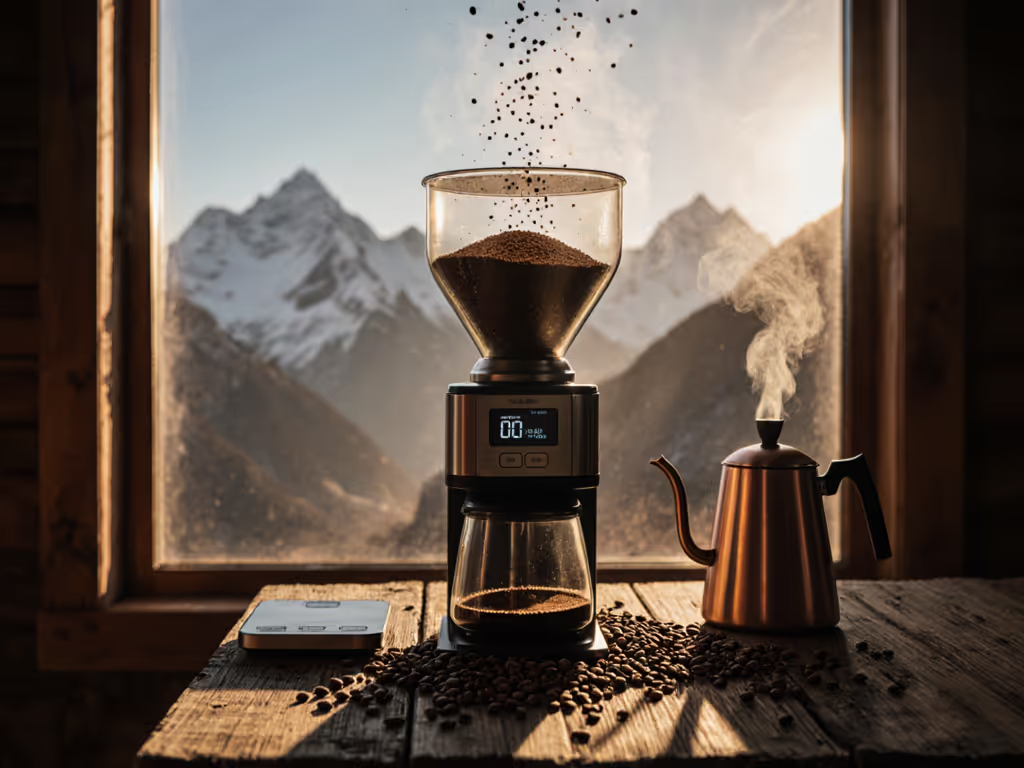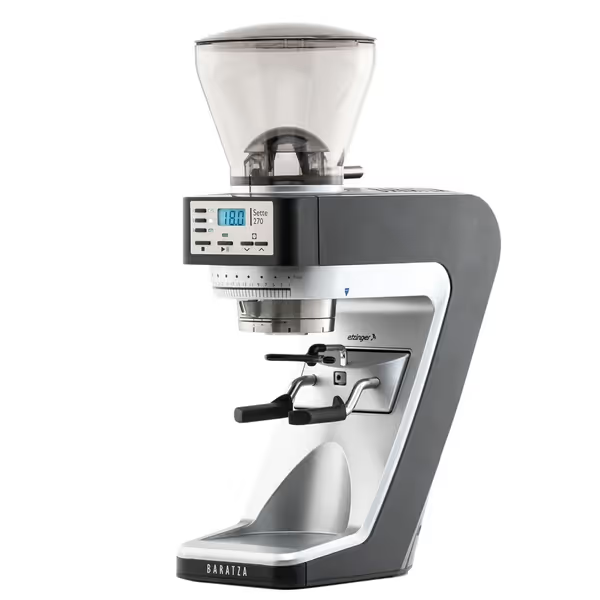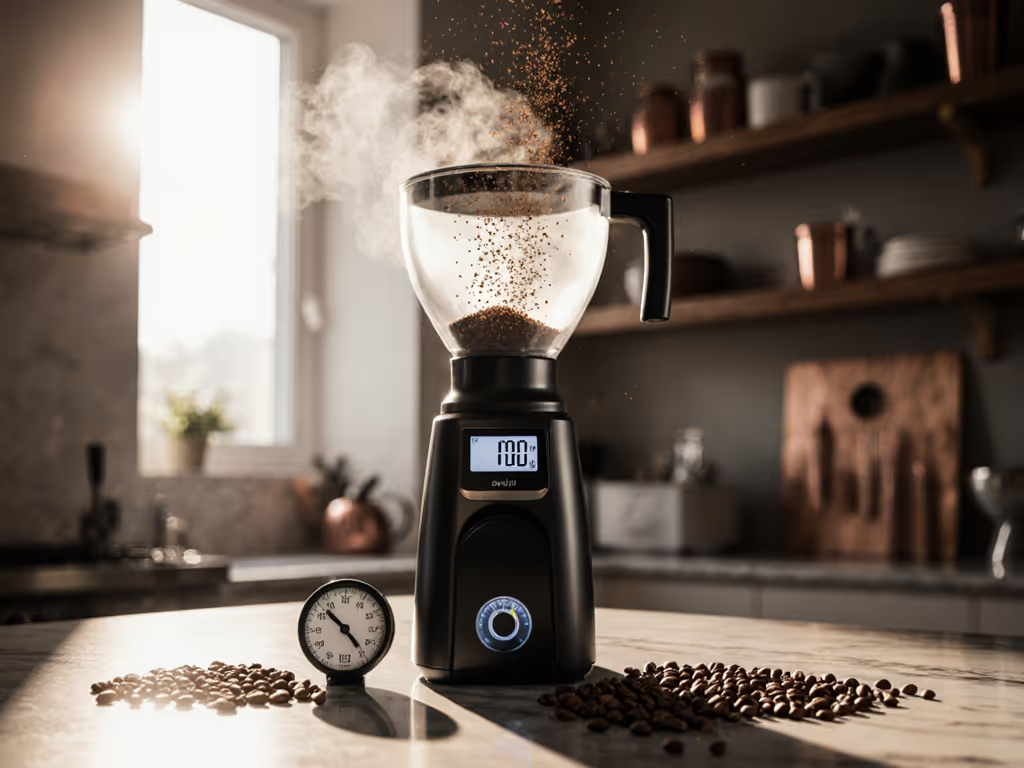
High Altitude Coffee Grinding: Thin Air Adjustments

The Thin Air Truth: Why Your Mountain Brew Falls Flat (Without These Adjustments)
If you've ever sipped a lackluster cup at 7,000 feet while your sea-level brews sing, you're facing high altitude coffee grinding realities. Mountain brewing challenges start where physics takes over: lower atmospheric pressure drops water's boiling point by roughly 1°F for every 500-foot elevation gain. At 5,000 feet, that's a 10°F deficit (enough to cripple extraction). As someone who's tracked grinder lifecycles across four continents, I've learned that specs on paper rarely match performance where you live. Brew quality hinges on how your gear adapts to thin air, not just its launch-day promises.
Atmospheric Pressure vs. Your Morning Cup: The Physics of Thin Air
Water boils when vapor pressure equals atmospheric pressure. At sea level (14.7 PSI), that's 212°F. But at 8,000 feet (10.9 PSI), boiling plummets to 197°F (a critical 15°F drop). This isn't just trivia; it directly impacts thin air coffee extraction. Lower temperatures mean water molecules move slower, reducing solubility and slowing extraction kinetics. For a deeper dive into how particle size distribution shapes flavor, see our coffee extraction science explainer. Compounding this, atmospheric pressure effects accelerate CO₂ degassing in freshly roasted beans, further shortening the optimal brewing window. Field tests from Perfect Daily Grind confirm this: extraction yields drop 15-20% at 3,000+ meters without adjustments, explaining why even premium beans taste sour or weak up high.
What's rarely discussed? Your grinder's role in this equation. Bean density changes with elevation growth (high-grown beans like Ethiopian Yirgacheffe are harder), requiring finer grinding to compensate for reduced solubility. If roast level is shifting your results, follow our guide on roast density grind settings. Yet most home grinders lack the precision to navigate these shifts (especially when paired with inconsistent techniques). I've seen brewers blame "bad beans" when the real culprit is mismatched grind size for altitude. Ownership isn't about the initial purchase; it's about having a machine that adapts as conditions change.
Comparative Analysis: Sea Level vs. 8,000ft Brewing Parameters
Here's how core variables shift at elevation, based on data from High Altitude Baker and Counter Culture Coffee's lab tests. These aren't suggestions (they're physics-driven necessities):
| Parameter | Sea Level (0-1,000 ft) | High Elevation (8,000 ft) | Why It Matters |
|---|---|---|---|
| Grind Size | Medium-coarse | Medium-fine | Compensates for lower solubility; high-grown beans need 15-20% finer grind per Stitch Coffee's density studies. |
| Water Temp | 200-205°F | 195-200°F (just off boil) | Maximizes extraction within lowered boiling constraints; hotter water risks scalding delicate high-altitude beans. |
| Brew Time | Standard (e.g., 3 min) | +20-30 seconds | Offsets slower extraction kinetics; too short leaves under-extracted, grassy notes. |
| Coffee Ratio | 1:16 (brew) | 1:14-1:15 | Prevents weak brew from reduced extraction yield; avoids wasting expensive beans. |
Precision matters here. A grinder with coarse steps (like basic blade models) forces you to choose between over-extraction and under-extraction. This is where machines like the Baratza Sette 270

Baratza Sette 270 Conical Burr Coffee Grinder
shine (not for the brand name, but for its 270 micro-adjustments). When dialing in for altitude, that granularity means landing on the setting that pulls nuanced notes from a Geisha at 7,500 feet, not just settling for "close enough".
The Mountain Brewer's Adjustment Checklist
Forget chasing one perfect setting. High elevation demands adaptable routines. Apply these altitude adjustment techniques based on your elevation bracket:
- Under 3,000 ft: Minor tweaks suffice. Start with a slightly finer grind (1-2 notches) and 198°F water.
- 3,000-6,000 ft: Increase coffee dose by 5% (e.g., 17 g to 18 g for a 280 ml brew), use medium-fine grind, and extend brew time by 15 seconds.
- 6,000+ ft: Go full high elevation brewing mode: grind 20% finer than sea-level baseline, use a 1:14 ratio, and pull brews at 195°F. Always use a thermometer (off boil varies wildly with altitude).
Key insight from years of tracking repairs: Grinders fail faster in dry mountain air due to static buildup. Include a monthly burr cleaning in your maintenance schedules, it's cheaper than replacing worn parts. And keep a spare adjustment knob parts on shelf; thin air stresses mechanisms more than humid coastal climates.
Sustainable Mountain Brewing: Wasting Less Beans, Tasting More
Most advice stops at "grind finer." But let's talk ownership cost. Without altitude-aware techniques, you'll waste 30% more beans chasing decent extraction (about $150+ yearly for daily drinkers). My transparent cost math tracking shows that investing in a grinder with repeatable settings (like the Fellow Ode Gen 2's 31-step burrs) pays for itself in saved beans within 18 months. It's not about buying expensive gear; it's about avoiding churn. I kept a $120 grinder viable for eight years in Colorado's Rockies because it had serviceable parts and fine-enough adjustments. When your friend's boutique grinder failed after two seasons (no local repair support), my modest machine's spare parts lists kept it humming.

This mindset shifts brewing from frustration to mastery. On a recent trip to Cuzco (11,200 ft), I used a borrowed grinder with wildly inaccurate settings. Instead of blaming the machine, I dialed it in with a coarser-than-expected grind (per local barista advice) and 193°F water. The resulting cup? Cleaner than any I'd had at sea level. That's the power of understanding why, not just following presets.
Final Verdict: Your Altitude-Adaptive Brewing Path
High altitude coffee grinding demands respect for physics, not heroics. You'll conquer mountain brewing challenges by:
- Prioritizing grind precision over brand prestige
- Tracking your own maintenance schedules for dry-climate upkeep
- Treating temperature as a variable, not a constant
No single grinder "solves" altitude. But durable, repairable models with incremental adjustments turn thin air from a barrier into a brewing advantage. Remember: specs degrade in real-world use, but a thoughtful path endures. For consistent cups in thin air, learn how to stabilize grinder temperature to reduce thermal drift across sessions. Buy the path, not just the spec sheet. When your grinder needs a bearing tweak after five mountain winters, you'll want those parts on shelf, not a landfill-bound replacement. That's ownership.
Ownership experience matters more than launch specs.
Related Articles



Coffee Grind Sizes Decoded: Science Over Guesswork
Learn how to replace grind guesswork with a science-based focus on particle distribution and consistency, and why these drive extraction, flow, and flavor. Gain method-specific targets and simple calibration protocols - including sieve checks and thermal drift adjustments - for repeatable results at home or in service.

